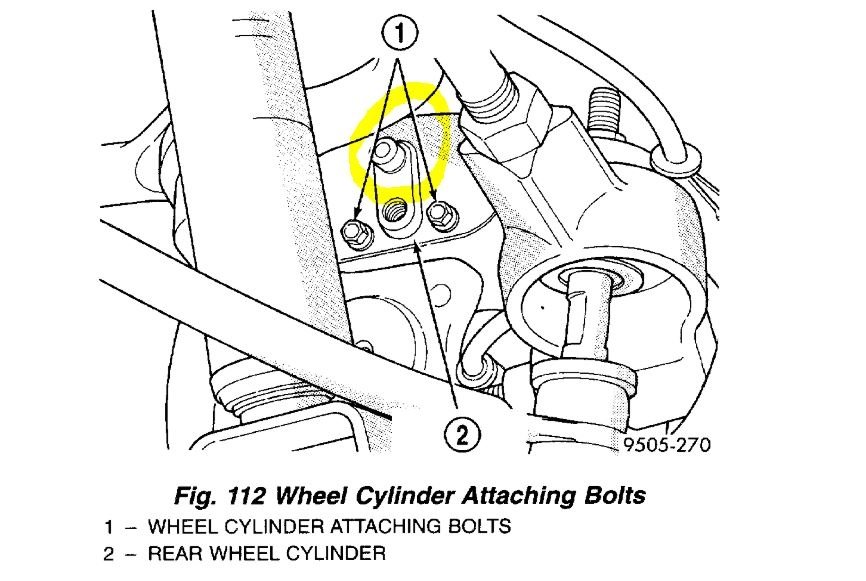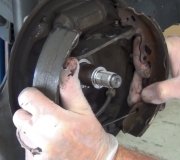Good morning,
I attached a picture of the bleeder screw you need to open for the bleeding process. I also attached a procedure for the bleeding as well.
https://www.2carpros.com/articles/how-to-bleed-or-flush-a-car-brake-system
Roy
The base brake's hydraulic system must be bled anytime air enters the hydraulic system. The ABS though, particularly the Integrated Control Unit (ICU) [Hydraulic Control Unit (HCU)], should only be bled when the HCU is replaced or removed from the vehicle. The ABS must always be bled anytime it is suspected that the HCU has ingested air. Under most circumstances that require the bleeding of the brakes hydraulic system, only the base brake hydraulic system needs to be bled.
It is important to note that excessive air in the brake system will cause a soft or spongy feeling brake pedal.
During the brake bleeding procedure, be sure the brake fluid level remains close to the full level in the master cylinder fluid reservoir. Check the fluid level periodically during the bleeding procedure and add DOT 3 brake fluid as required.
The ABS must be bled as two independent braking systems. The non-ABS portion of the brake system with ABS is to be bled the same as any non-ABS system.
The ABS portion of the brake system must be bled separately. Use the following procedure to properly bleed the brake hydraulic system including the ABS.
PROCEDURE
When bleeding the ABS system, the following bleeding sequence must be followed to insure complete and adequate bleeding.
1. Make sure all hydraulic fluid lines are installed and properly torqued.
2. Connect the DRB scan tool to the diagnostics connector. The diagnostic connector is located under the lower steering column cover to the left of the steering column.
3. Using the DRB, check to make sure the Controller Antilock Brakes (CAB) does not have any fault codes stored. If it does, clear them using the DRB.
WARNING: WHEN BLEEDING THE BRAKE SYSTEM WEAR SAFETY GLASSES. A CLEAR BLEED TUBE MUST BE ATTACHED TO THE BLEEDER SCREWS AND SUBMERGED IN A CLEAR CONTAINER FILLED PART WAY WITH CLEAN BRAKE FLUID. DIRECT THE FLOW OF BRAKE FLUID AWAY FROM YOURSELF AND THE PAINTED SURFACES OF THE VEHICLE. BRAKE FLUID AT HIGH PRESSURE MAY COME OUT OF THE BLEEDER SCREWS WHEN OPENED.
4. Bleed the base brake system using the standard pressure or manual bleeding procedure as outlined in Base Brake System Bleeding.
5. Using the DRB, select ANTILOCK BRAKES, followed by MISCELLANEOUS, then BLEED BRAKES. Follow the instructions displayed. When the scan tool displays TEST COMPLETED, disconnect the scan tool and proceed.
6. Bleed the base brake system a second time. Check brake fluid level in the reservoir periodically to prevent emptying, causing air to enter the hydraulic system.
7. Fill the master cylinder reservoir to the full level.
8. Test drive the vehicle to be sure the brakes are operating correctly and that the brake pedal does not feel spongy.
Image (Click to make bigger)
Thursday, June 13th, 2019 AT 6:14 AM



